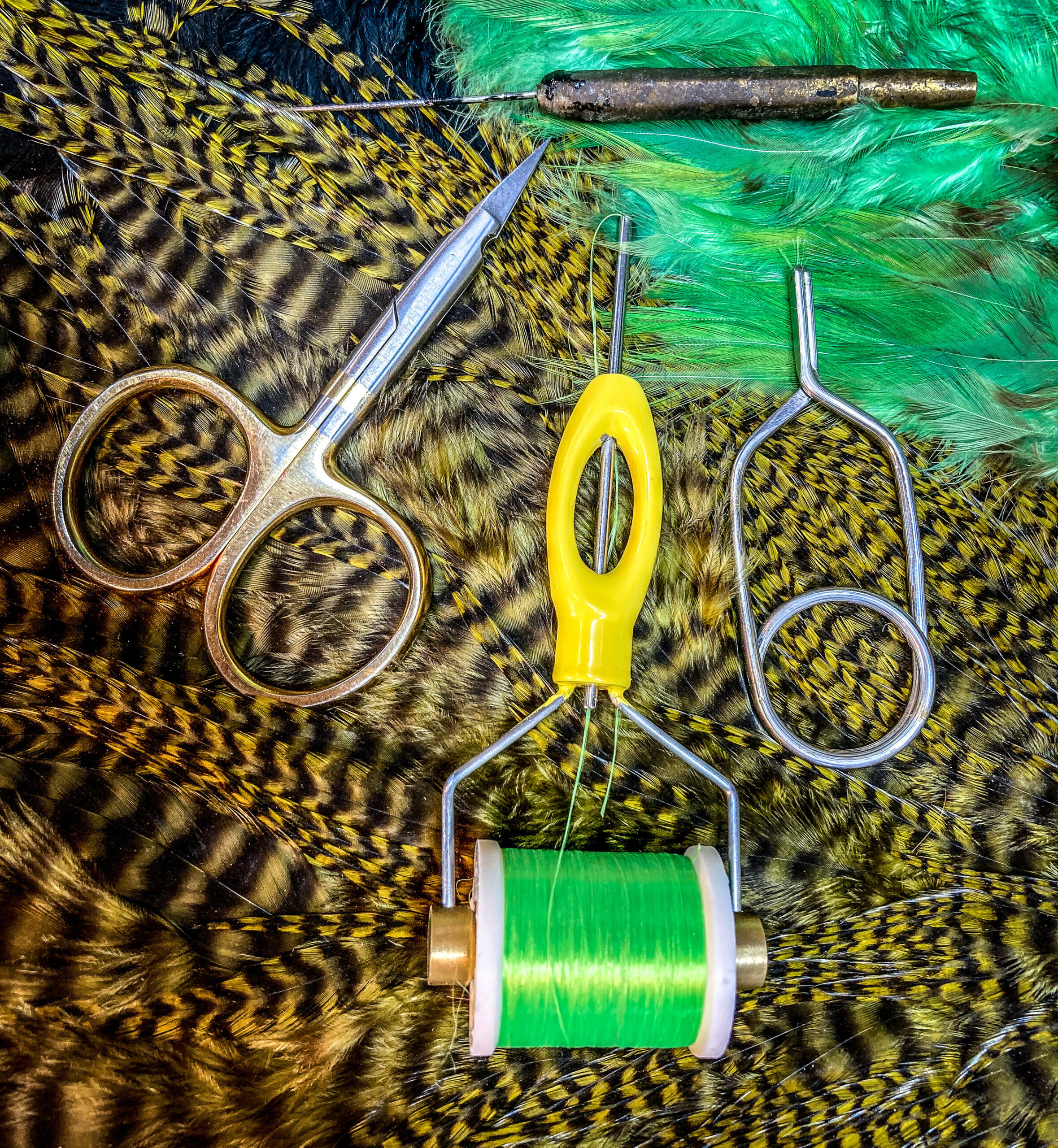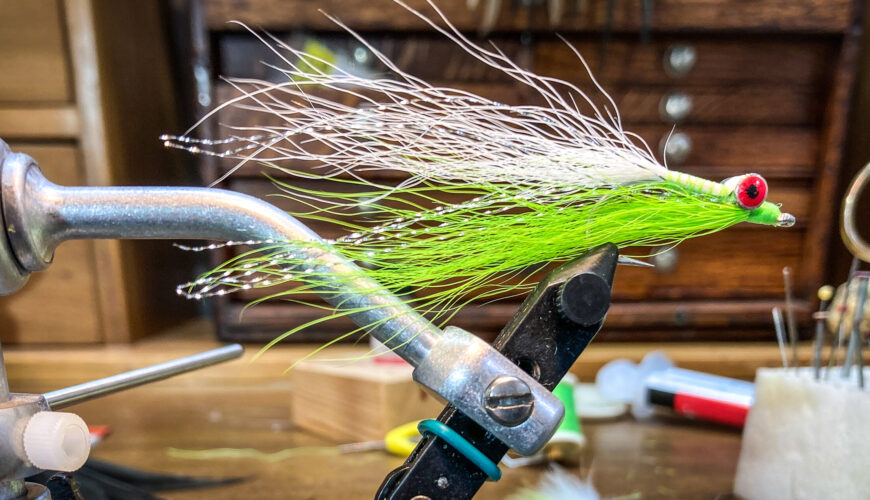Tactics
Sporting Clays Technique: How To Deal With Teal
November 24, 2025 •Mark Chesnut
January 4, 2022
There’s something very rewarding about making your own stuff. Over the years I’ve made my own recurve bows, built boats, fly rods and a host of other things. However nothing has been more beneficial to me than making my own hand tied fishing flies. It is extremely cost efficient and there’s nothing like fooling your favorite game fish with a gob of feathers and hair you personally put together at the tying vice.
There is a myth that flies and lures are hard to construct and that they have to be perfectly constructed. My flys are far from perfect, some even embarrassing. Sometimes I think it is beneficial if my fly looks a bit shabby. Once you learn a few basic tying skills you’ll be able to create any fly pattern that fits your needs.

Basic tying tools (counter-clockwose from top, left): scissors, bobbin, hackle pliers and (well-used) bodkin. [Photo: Dean Shadley]
One of the greatest advantages to making your own flies and lures is that you can customize your baits to fit any given situation. For example if you notice fish feeding on two inch silver minnows you can return to your tying bench and create a two inch silver minnow.
The next time you’re fishing your favorite stream and fish are chasing two inch silver minnows you’ll have something to feed them.
Another perk is that you can get very specific. One of the rivers I frequent has crawfish that are dark olive in color. I’ve seen crawfish in other bodies of water that are dark brown, dark red and sometimes almost black. By tying my own flies I can perfectly match the color and size of the crawfish to the river I’m fishing. The fish might not mind if my flys are off a shade or two but it makes me feel better. On the other hand it might be the slight difference between a successful day and one that could be classified as marginal.
Another reason you may shy away from making your own artificial baits is that you don’t have time to tie all of those flies. Unless you’re a trout fisherman you’ll only need to learn to tie a handful of patterns. Trout fisherman need boxes of flies in various sizes and patterns. They’re trying to imitate an exact insect that the trout are feeding on.
That insect may change in size and color throughout the day. I’ve found that’s not true when you’re chasing bass, largemouth or smallmouth. When I fish my favorite smallmouth stream I’ll only have two small fly boxes in my possession. In those boxes there will be a maximum of six different fly patterns.
The vast majority of my experience creating my own fishing baits is with fly tying. I’ve made a few spinners and wooden bass plugs but it’s not my area of expertise. I’ve fished with friends that used their home grown spinning and bait casting lures and they caught their fair share of fish.
I don’t feel qualified to guide you any further on your path to creating your own spinning and bait cast lures. I’m sure there are plenty of fishermen on YouTube to guide you in the right direction.
I do have a few bits of advice to offer before you rush out and buy equipment and materials to start your new hobby. Stay away from kits, those all-inclusive packages that supposedly have everything you’ll ever need.
At age 11 I was desperate, I had a fly rod but couldn’t find any flies to purchase at my local bait shop or sporting goods store. My only solution was to tie my own. My Herter’s Catalog had a basic fly tying kit for sale so I ordered one. Since I had no idea what a tying vice or fly tying material looked like I thought it was wonderful. In retrospect it was a disaster.
I would have been better off with a pair of vice grips and a dead sparrow. There may be some decent packages out there that contain the basic tools for fly tying, but stay away from any kit that contains fly tying material.
As I stated earlier one of the advantages of fly tying is that you can tie flies for your specific need. If you want to catch bluegills, buy the material to tie bluegill flies. The same goes for any other fish species you decide to pursue.

Pumpkin and chartreuse Clouser minnow in a rotary vice. [Photo: Dean Shadley]
They come in fixed and rotary head designs. I prefer the rotary head even though they are more expensive. The rotating head allows me to rotate my fly 360 degrees while tying. This can be very advantageous while tying certain patterns.
Plan on spending somewhere in the neighborhood of fifty bucks on the rest of your tying tools. One place you can save some hard earned cash is on hooks. Hooks designed specifically for fly tying are expensive. You won’t find them outside of a fly shop or a retail store with a fly fishing department.
If you’re tying dry flies for trout, buy the fancy hooks. If not buy basic hooks you can find anywhere fishing equipment is sold. I tie and lose a ton of flies so I like cheap hooks.
And last be not least, how do you learn the basics of hand tied fishing flies? YouTube of course.
